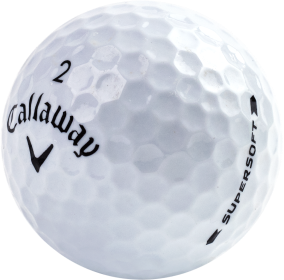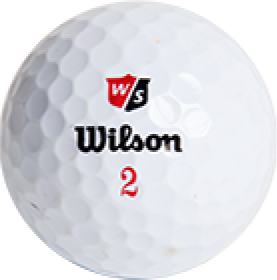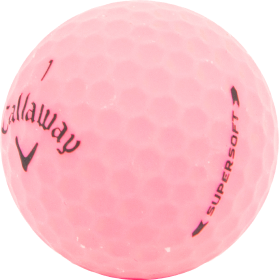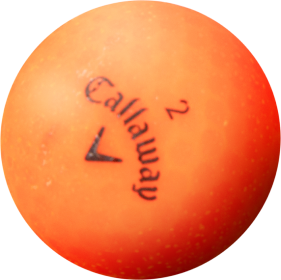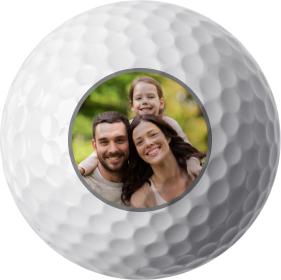The History of Color Golf Balls - From Yellow Spalding in the 1970s to Callaway Soccer Balls
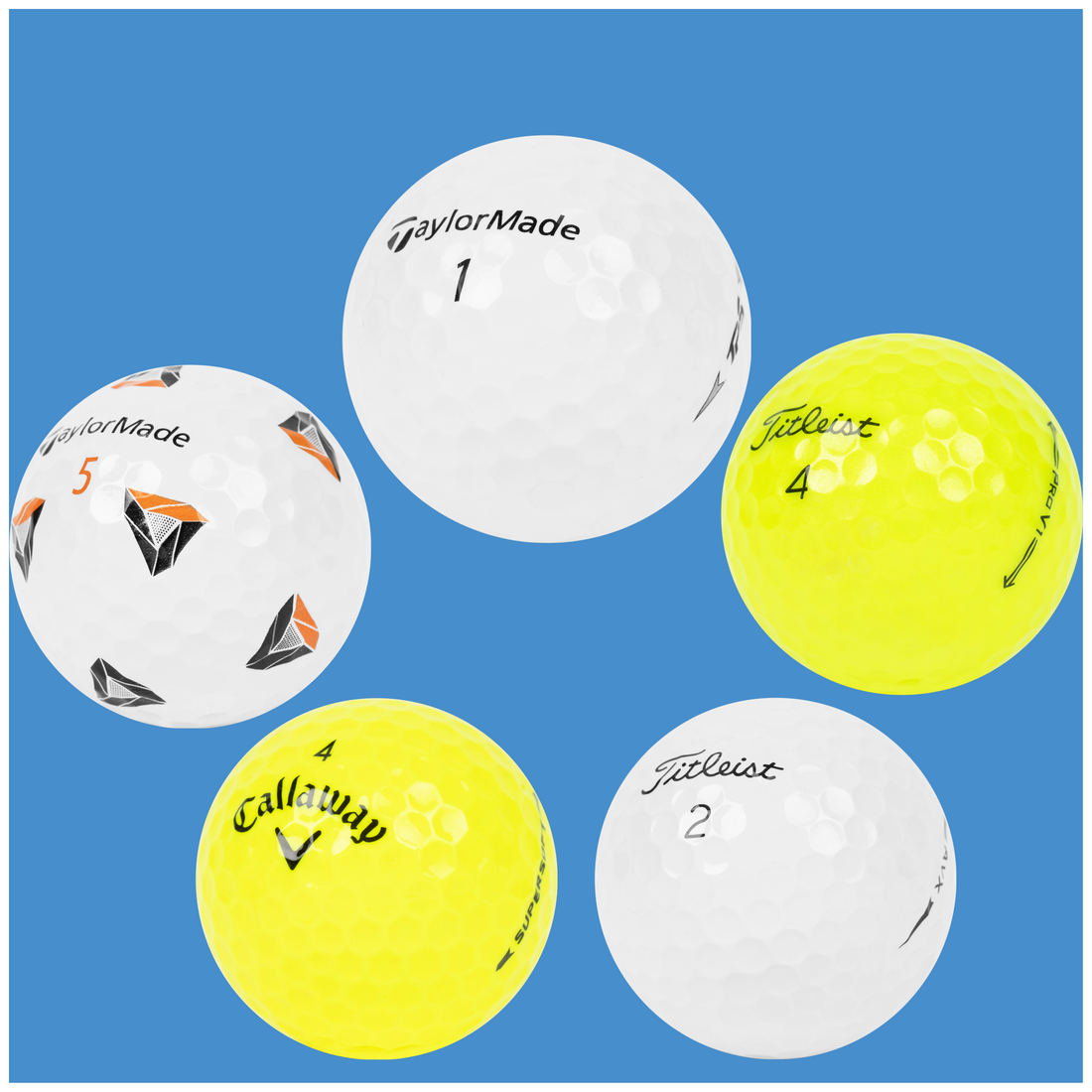
Golf is a game that has been enjoyed by millions of people around the world for centuries and when you have a centuries old game you're going to have innovations over a very rich storied history. One of the most significant advancements and innovations in golf equipment technology over the past few decades has been the development of color golf balls. From the traditional white golf balls, we've come a long way to a wide range of colors and designs that add a new level of excitement and creativity to the game.
In this post, we will dive into the history of different colored golf balls and how various golf ball colors rose in popularity over the years.
The traditional golf ball color has always been white. The first golf balls were made from leather and stuffed with feathers. These balls were used in the early days of golf in Scotland during the 15th century. Over time, the variety of golf ball colors expanded to enhance visibility and add flair to the game.
The first rubber-core golf ball was introduced in 1905 by the Coburn Haskell company, and it was also white. This ball became the standard for the game and remained so for many decades.
However, there was one issue with white golf balls. They were often hard to spot in certain conditions, especially in low light or when it was overcast. This made it challenging for players to keep track of their shots, leading to lost balls, frustration, and a longer game.
In the 1970s, the Spalding company introduced the first yellow golf ball. This ball was called the Executive, and it was marketed as a ball that was easier to see in low light conditions. This color golf ball did not become very popular because it was seen as a novelty item rather than a serious golf ball.

Titleist was the first company to produce a yellow golf ball that was a serious contender in the market. In 1984, they introduced the Titleist Professional 90, which was a yellow version of their popular Professional golf ball. This ball was designed for higher visibility and was marketed towards golfers who wanted to be able to spot their ball better in the air and on the ground. The success of the Titleist Professional 90 proved that there was a market for colored golf balls.
Ping Golf Balls
Ping is a well-known golf equipment company that was founded in 1959. The company is famous for its high-quality clubs, but they also produced a line of golf balls.
Ping golf balls were first introduced in the 1970s, and they quickly became popular with golfers who wanted a high-quality ball. Ping balls are known for their soft feel and exceptional distance, making them a top choice for players who want to take their game to the next level. Unfortunately Ping discontinued their golf balls in 1999 making the current available Ping golf balls collectors items. Some going for as high as $1,000 a ball!

Pink Golf Balls
In 1993, the LPGA Tour allowed players to use pink golf balls during the Phar-Mor at Inverrary tournament. This tournament was sponsored by the breast cancer research foundation, and the pink balls were used to raise awareness for the cause. The tournament was a huge success, and the use of pink golf balls became a popular trend on the LPGA Tour.
In 2001, Wilson Sporting Goods introduced the first pink golf ball, called the Hope. This ball was designed to raise money for breast cancer research, with a portion of the proceeds going to the Susan G. Komen Breast Cancer Foundation. The Hope ball was a huge success and inspired other companies to create their own pink golf balls for charitable causes.
Orange Golf Balls
The first mass production orange golf balls were first introduced in the early 2000s. The Volvik company was the first to produce an orange golf ball that was marketed towards serious golfers. Their orange ball was designed to have a high visibility, making it easier for players to spot in the air and on the ground.
The success of the Volvik orange ball inspired other companies to create their own versions. In 2016, TaylorMade introduced an orange version of their popular Tour Preferred X ball. This ball was designed to have a softer feel than other orange balls on the market, making it a popular choice for players who wanted a softer ball without sacrificing visibility. This highlights how diverse golf ball colors can cater to different player preferences.

Green Golf Balls
Green golf balls were introduced in the mid-2000s. The Srixon company was the first to produce a green golf ball that was marketed towards serious golfers. Their green ball was designed to have a high visibility, making it easier for players to spot in the air and on the ground.
The success of the Srixon's green ball led other companies to create their own versions. In 2016, Callaway introduced a green version of their popular Chrome Soft golf ball. But I am getting ahead of myself. Lets talk about the soccer ball.
Truvis Golf Balls
The Callaway Chrome Soft Truvis golf ball was first introduced in 2016. This ball was designed with a unique Truvis pattern that made it look like a soccer ball. The design was a hit with golfers, and the ball quickly became one of the most popular colored golf balls on the market.

The Truvis pattern was not only a hit with golfers, but it also had a functional purpose. The design made it easier for players to see the ball's spin and direction, which helped them make more accurate shots.
Vice Golf Balls
Vice Golf is a German company that was founded in 2012. They produce a wide range of golf balls in different colors and designs. Tapping into the culture of hip and modern golfers, Vice golf balls quickly became popular with golfers who wanted a unique look and feel to their game.
One of the most significant advantages of Vice golf balls is their affordability. They offer a high-quality product at a lower price than other top-tier golf ball companies.
Glow in the Dark Golf Balls
Glow in the dark golf balls were first introduced in the 1990s. These balls were designed to be used at night, making it easier for players to see their shots in low light conditions.
In recent years, the popularity of glow in the dark golf balls has increased. These balls come in a variety of colors and designs, and they add a new level of excitement and fun to the game.
Onward to the future!
The history of colored golf balls dates back to the early 1970s when Spalding introduced the first yellow golf ball. Since then, golf ball companies have experimented with different colors and designs to create products that are both functional and aesthetically pleasing.
Colored golf balls have added a new level of excitement and creativity to the game, making it more enjoyable for players of all skill levels. Whether you prefer a classic white ball or a bold and bright colored ball, there is a golf ball out there that will fit your needs.
From pink balls that raise awareness for breast cancer research to Truvis soccer ball designs that add a little fun to the game, the future of colored golf balls looks bright. As technology continues to advance, we can only expect to see more innovative designs and features added to golf balls in the years to come.

